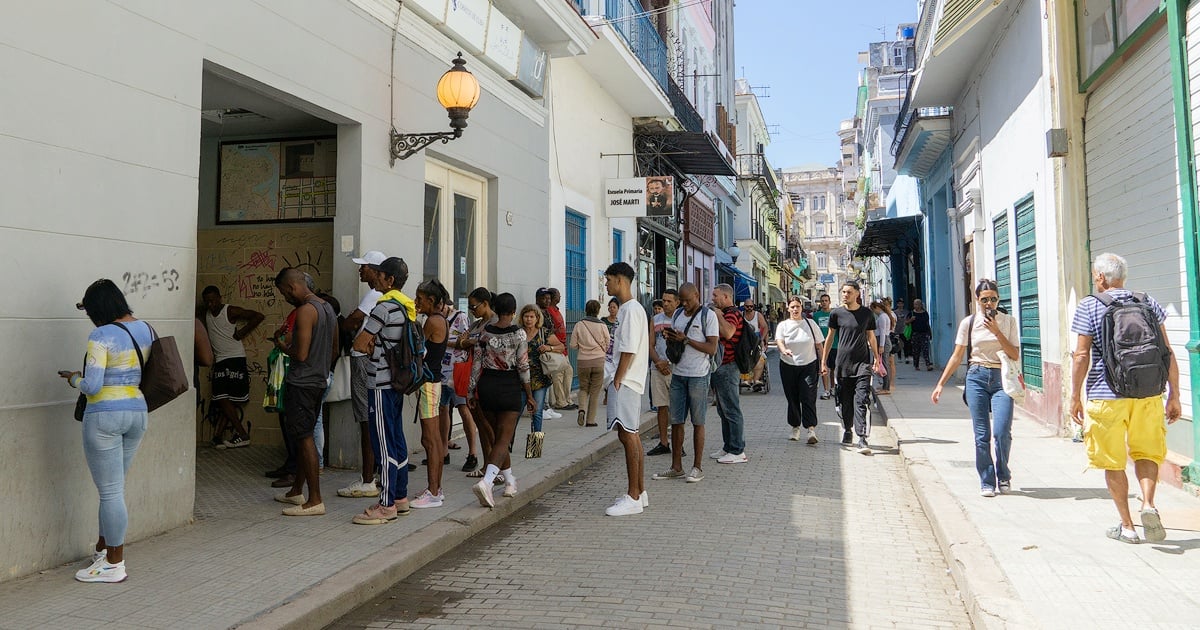The Cuban government has initiated a revamped salary payment scheme for a select group of foreign and mixed enterprises. These businesses are now required to pay only half of their previous wage expenses, with the conversion of foreign currency into local currency occurring at a rate five times higher than the existing rate for legal entities. The new exchange rate is set at 120 Cuban pesos (CUP) per U.S. dollar (USD), as opposed to the official rate of 24 CUP per USD for legal entities.
This policy, exclusively reported by the EFE agency on Monday, has been in effect since March. The information has been confirmed by three sources closely involved with the reform, who requested anonymity.
Who Benefits from Cuba's New Wage Payment System?
The revised exchange rate currently applies only to local payroll payments in select productive enterprises with foreign investment located in the Mariel Special Development Zone (ZEDM), situated about 28 miles west of Havana. This area is designed as an economic enclave to attract foreign capital. The immediate beneficiaries are the companies involved, which can reduce their labor costs by 50% without cutting staff, enhancing their competitiveness and enabling them to offer better incentives to retain talent amidst the ongoing migration crisis.
Many of these foreign companies had previously expressed to the Cuban government the challenges of operating under the official exchange rate for legal entities, which was misaligned with the country's economic reality. The informal exchange rate currently exceeds 350 CUP per dollar, creating a significant cost disparity for these businesses, impacting their efficiency, profitability, and competitiveness.
The workers are also positively impacted by this measure: their salaries in Cuban pesos effectively increase by 150%, greatly improving their ability to cope with rampant inflation in Cuba.
Foreign Investment and National Production
The stated aim of this initiative is to boost foreign investment and, consequently, increase the inflow of foreign currency into the country, alongside stimulating national production. According to the United Nations, Cuba is currently grappling with an economic crisis that has persisted for over five years, necessitating the importation of 80% of its consumption needs.
For now, this exchange rate will not extend to other foreign or mixed enterprises outside the ZEDM, raising concerns about operational equity within the country. A potential widespread adoption of the new exchange rate could further escalate inflation and diminish state revenue, which relies on a commission from each contract managed through mandatory employment agencies for foreign companies in Cuba.
The foreign exchange market is a critical structural issue within the Cuban economy. The existence of parallel exchange rates, the dual currency system, and an increasing dollarization process have led to a dynamic informal currency exchange market. This situation, coupled with inflation, has eroded the purchasing power of the population and exacerbated liquidity shortages in the state-controlled national banking system.
This measure follows three months after Prime Minister Manuel Marrero announced a series of reforms in the segmented official exchange market, characterized by economically unsupported rates that put it at a disadvantage against the informal market. In that context, the government expressed a desire to move towards a floating exchange rate that adjusts daily, a step that has yet to be implemented.
As of the closure of this report, the Cuban government has not publicly unveiled the new salary scheme for employees of foreign and mixed companies. The EFE agency mentioned attempts to reach out to authorities for an official statement, but no response was received.
Adapting to Partial Dollarization
Recently, Miguel Díaz-Canel acknowledged that Cuba must "adapt to the partial dollarization" of its economy. He also announced ongoing reviews of monetary policy in light of the severe deterioration of the financial system and the rampant inflation affecting the population. "We must continue working amidst these situations and the distortions created by the implementation of the restructuring, seeking a more realistic and flexible currency unification," the leader stated during a meeting with national banking system executives, broadcasted by Canal Caribe.
The head of the Cuban regime defended partial dollarization as an unavoidable reality, suggesting that it could become an incentive if properly managed within the financial system. "Seek actions that allow us to control inflation, how to live with partial dollarization so that it effectively stimulates foreign currency inflow," he expressed.
Díaz-Canel also highlighted other challenges facing the system: "How to stimulate national production through banking and financial activities, how to align monetary policy with fiscal and social policies, because we are in a process of socialist construction," he said, justifying the state's central role in all economic decisions.
The leader concluded by emphasizing the need to modernize banking and advance digitalization and banking services, though he avoided providing concrete solutions for cash shortages, ATM collapses, or the widespread rejection of electronic payments.
Understanding Cuba's Economic Changes
What is the new exchange rate for salaries in Cuba?
The new exchange rate for salaries in select companies in Cuba is set at 120 Cuban pesos per U.S. dollar, significantly higher than the official rate for legal entities.
Which companies benefit from the new salary payment scheme?
The companies benefiting from this new scheme are foreign and mixed enterprises located in the Mariel Special Development Zone, which can reduce labor costs by 50%.
How does the new exchange rate impact workers?
Workers see a 150% increase in their salaries in Cuban pesos, which helps improve their purchasing power amid high inflation.
